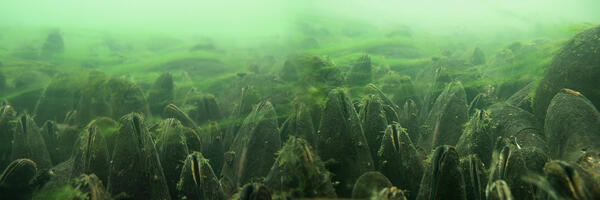A bed of Western Pearlshell mussels in the Chehalis River
A bed of Western Pearlshell mussels in the Chehalis RiverFreshwater mussels can be hard to find because they nestle into riverbeds. With new tools, we can find mussels by looking for their DNA in water samples in the lab.















